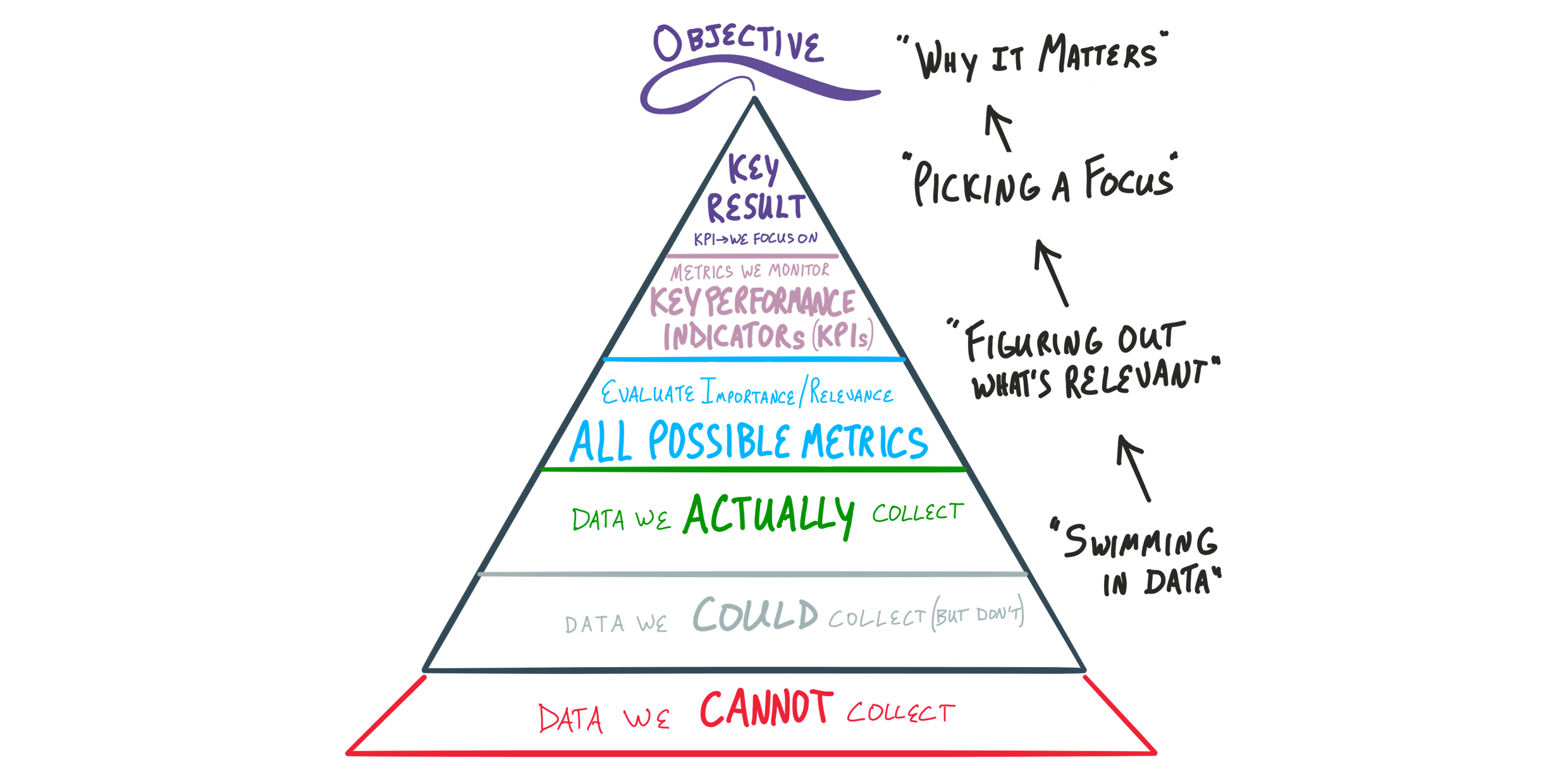Analytics Transformation: How Leaders Can Avoid the Analytics-Free Environment

Too many product leaders allow their teams to operate in an “analytics-free” environment.
These teams are often totally driven by delivery dates, stakeholders, and specific client requests.
Without an agreed-upon success metric, it’s hard for these teams to make their own product decisions.
Leaders can and should create a new culture where teams set team-level success metrics, link them to company goals and use data analysis to make product decisions.
Today, folks are presented with established concepts (aka, frameworks) and adopt them without knowing the underlying principles.
One of these frameworks is using Objectives and Key Results (OKRs) to run your company, organization, team, product.
As part of the OKRs framework, we SHOULD collect data, watch trends in the data, dream of a future state where that trend is better, and create work to move that trend in our preferred direction.
An exploration into how the early wins from the 80/20 rule inevitably hit the ceiling of an invisible asymptote, exposing our battle with the law of diminishing returns.
Many companies adopt the Objectives and Key Results (OKRs) framework.
They create goals but struggle to achieve them.
Only some of this failure can be blamed on the goals themselves.
Part of this failure can be attributed to a lack of an analytic culture and a lack of an analytic mindset in your key employees.
It’s a simple question.
But often there’s an unsatisfying answer.
The first step towards understanding whether you're successful today starts with recognizing (and using less of) the following types of data: “Anecdata”, Reactive measurements, and Internal metrics.
Data analysts provide the eyes and ears for Product Leaders. A few simple tips can maximize this relationship.
Over the years, I've managed and helped grow the career of many analysts and data scientists.
Making data easy to access is not enough to avoid the “analytics-free” environment.
Leaders need to provide the proper motivation.
A broad definition of motivation includes compelling teams to change their behaviors, holding them accountable, avoiding demotivation and praising teams who are early adopters of consistent data analysis.
At a recent client, some product groups (3 to 5 teams each) were using analytics but most were not. In one of these groups not using analytics, there was an overwhelming push to deliver. Once they delivered, they moved on to the next feature without measuring success or failure.
BJ Fogg, PhD, a Stanford behavioral science researcher and author of Tiny Habits, has created a simple, yet powerful model of how to change behavior.
If users are more motivated and the desired action is easier to do then the behavior change is more likely to happen.
I’ve applied his Behavior Model to data analysis transformation.
When leaders make data easier to access and motivate their teams to analyze data then more decisions will be based on data analysis.
Too many Product teams operate in an “analytics-free” environment.
They don’t track product usage, business results or customer satisfaction.
Without analytics, we lack the "eyes and ears" to see and hear what’s happening with our users.
Many Product teams struggle about what to do next.
Learn to prioritize everyday work using business outcomes. It made our website profitable and grew our traffic to over 5 million monthly users.
Find your leading indicator. Then automate it.
Read about how using a leading indicator can make you a better Product leader.
When confronted with too many options, customers will stop in their tracks.
Too much choice creates confusion which prevents conversion.
A time tested way to solve this problem is to create a Consumer Decision Tree within your application or website.

Jim coaches Product Management organizations in startups, scale ups and Fortune 100s.
He's a Silicon Valley entrepreneur with over two decades of experience including an IPO ($450 million) and a buyout ($168 million). These days, he coaches Product leaders and teams to find product-market fit and accelerate growth across a variety of industries and business models.
Jim graduated from Stanford University with a BS in Computer Science and currently lectures at UC Berkeley in Product Management.












